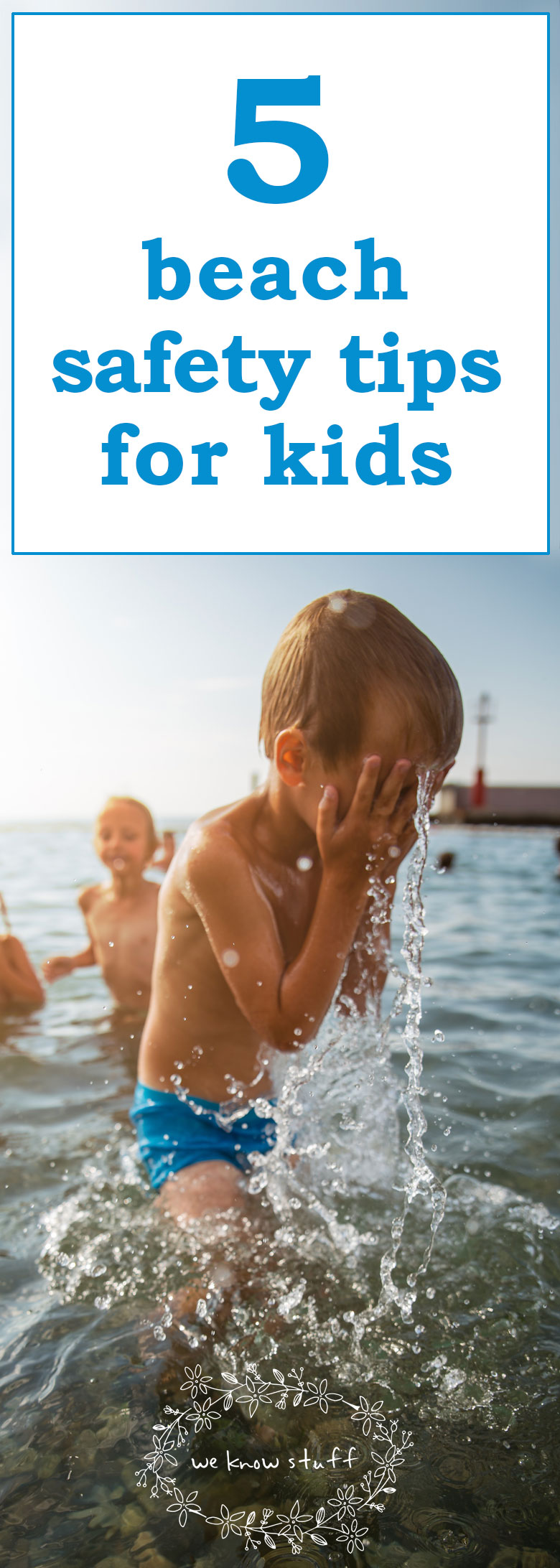These Beach Safety Tips For Kids from Steve Kardian, a 30-year law enforcement veteran and FBI defense tactics instructor, will help keep your family safe this summer.
Living on Long Island, you’re surrounded by water on all sides. If you drive North, you’ll hit the beautifully calm, yet incredibly rocky beaches that border the Long Island Sound. Go South and you’ll be at the fairly calm, sandy beaches that lay along the Great South Bay. And if you go over the bridges, you’ll reach the Atlantic Ocean. It’s a pretty amazing place to live – even with all of the traffic.
But when you’re surrounded by water like we are, it’s incredibly important that you learn how to swim. Even more important, it’s imperative that parents always keep a close eye on their children whenever they’re by a body of water.
According to the Center for Disease Control, about 4,000 people drown in the United States every year and drowning kills more children, ages 1-4, than anything else except for birth defects. It’s also the second leading cause of unintentional injury or death (after motor vehicle crashes) among children ages one through fourteen.
Can you believe it? These statistics are downright scary. That’s why we wanted to share these Beach Safety Tips For Kids from Steve Kardian. A 30-year law enforcement veteran and FBI defense tactics instructor, he shares his best tips for parents to know this summer. Being aware of the risks and learning some life-saving techniques will keep you and your children safe at the beach this summer.
5 Beach Safety Tips For Kids To Keep Your Family Safe This Summer
1) Your Span of Control is Limited
In the perfect world, every child would have a designated adult supervising them at the beach or pool, but two children is a comfortable number for one adult to supervise. Any more can become overwhelming and increase the risk of something going wrong.
2) Drowning Doesn’t Look like Drowning (or: Drowning Doesn’t Look like You Imagine)
In the movies, when someone is acting out a drowning scene they wave their arms and scream for help. In real life, drowning is, for the most part, a silent act. Once a person goes into distress mode, they are fighting for two things: air and keeping their mouth above water.
Steve’s first experience witnessing the onset of a drowning occurred at a family pool when he was about ten years old. His much younger cousin was in two feet of water, bent over at the waist. It looked like he was looking at his feet or the bottom of the pool, but something didn’t seem right. When Steve lifted his head out of the water, his cousin began vomiting and crying. He had been stuck!
Another time, Steve was investigating a case and witnesses reported seeing a young girl bobbing her head up and down in the water. She had drifted from the shallow end of the pool into water above her head (or: the deep end) and was pushing off the floor of the pool to get air because she could not swim. She was saved but nearly drowned. If something in and around the water doesn’t look right, it likely isn’t.
3) Set Up by a Lifeguard – No lifeguard, No lifeline.
Set up your stuff near a lifeguard station so that if you venture into the water with your children there is an extra set of eyes to watch over you and your child. Don’t allow this to replace your diligence but rather supplement it. Your child is your first responsibility.
4) Don’t Get Lost in Conversation.
Going to the beach or pool is a social event. If you’re caught up in a conversation, keep your face and your eyes on your child. Mishaps and accidents can occur very quickly and with a mix of children and water, seconds matter. Keep your hands glued to your babies or toddlers at all times. If at the beach, keep an eye out for rogue waves. Chat with the lifeguard in advance about any dangers you should know about. Ankle deep water can quickly become a hazard if you are not paying attention. Outfit your child with bright colored beachwear. Know your limitations and educate yourself on riptides. While you are on child watch duty turn the cell phone off, and keep the Ipad or book out of your reach.
5) Learn CPR and Rescue Breathing.
Your local fire, police, recreation department or gym and health club often sponsor certified CPR courses. You will not realize its value until you need it!
What did you think of Steve’s tips? Have you ever needed help in the water?
Be safe, friends!
Denine
Want more safety tips for your family?
- the wearable safety app everyone should know about
- 6 water safety tips for kids
- 3 pet safety tips to keep in mind when grilling outdoors
- safety tips for college bound students
Steve Kardian is an American career law enforcement officer, detective, sergeant and chief criminal investigator, who specializes in crime prevention and risk reduction for women’s safety. Kardian is the author of The New Superpower for Women (on pre-sale until August 8, 2017) and founder of Defend University, where he trains thousands of people each year on safety and self-defense, as well as strategies and tactics uniquely tailored to women’s safety.



Leave a Reply